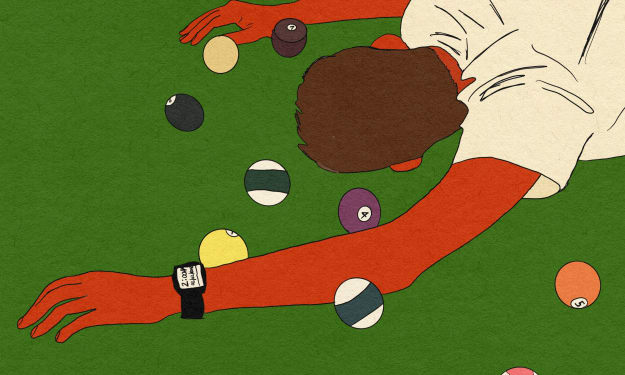The Evolution of Music: A Historical Look | Daniel Siegel Alonso
Daniel Siegel Alonso shares his insights about the evolution of music throughout history

Music has always been dynamic, molding and reflecting cultural shifts across generations. From the smoky underground clubs of Northern England to the gritty, graffiti-laden walls of New York City's punk venues, and the rain-soaked streets of Seattle, the evolution of music is a testament to the ever-changing landscape of human expression. Daniel Siegel Alonso takes you on a witty and insightful journey through pivotal moments in music history: The Beatles at The Cavern Club, punk rock's birth at CBGBs, and the Seattle grunge explosion.
The Beatles do The Cavern
Close your eyes and imagine: It's 1961, and you're down in the basement of The Cavern Club in Liverpool; it's packed with sweat-drenched, eager faces, and the air thick, dripping with anticipation. On stage, four young lads who would soon become the most famous band in the world are tuning their guitars. The Beatles, with their mop-top haircuts and cheeky grins, are on the precipice of changing music for generations.
Before they were household names, John, Paul, George, and Ringo honed their craft in this humble, dimly lit venue. The Cavern Club was their proving ground, where they transitioned from covering American icons Chuck Berry and Little Richard to showcasing their original material. Here, they first captivated audiences with their infectious energy and groundbreaking sound.
The group's time at The Cavern Club was pivotal. It was where they caught the eye of Brian Epstein, who would become its manager, and later, record producer George Martin, aka the fifth Beatle. This tiny, subterranean venue was the launchpad for a nuclear cultural revolution. The Beatles didn't just play pop and rock music; they constructed an identity, a lifestyle, and, in hindsight, an era. They embodied the spirit of the Swinging 60s, melding rock 'n' roll with a bouncy pop sensibility that was both rowdy and charming.
Anarchy in the Big Apple
Daniel Siegel Alonso fast-forwards to the mid-70s, and we're in an entirely different world. Bankrupt Manhattan, in the bowels of a biker bar on the Bowery called CBGBs--a mouthful of an acronym standing for Country, Bluegrass, and Blues. The stage is dilapidated, and the sound system is a haphazard collection of amps and speakers at best. Here, the raw energy of punk rock was born, thrashing and pogoing its way into the mainstream.
CBGBs became the center of a musical revolt. Groups like The Ramones, Blondie, and Television took to the ramshackle stage, bringing with them a loud, fast, and unapologetically raw sound. Punk was a direct response to the bloated excesses of middle-of-the-road rock and bands like Yes, Chicago, and Fleetwood Mac; punk was do-it-yourself, back to basics, and in-your-face.
The Ramones epitomized this new angsty attitude with their black leather jackets and torn jeans. The songs they wrote were short, sharp, and shocking to audiences accustomed to indulgent guitar solos and elaborate stage productions. CBGBs was more than just a venue; it was a breeding ground for a cultural movement. It embraced the DIY ethic, encouraging emerging bands to play regardless of polish or professionalism. This sense of independence and defiance reverberated with a new generation of listeners disenchanted by the status quo.
The Last Great Rock Revolution
Siegel Alonso jumps ahead another decade to Seattle, a city known more for its rain than its rock-and-roll. Yet, over three decades ago, Seattle was the epicenter of grunge, a new genre that would once again redefine music. The core of this movement was a collection of venues like The Crocodile and The Off Ramp, where bands like Nirvana, Pearl Jam, and Soundgarden first made their mark.
Grunge was a gritty, angst-filled reaction to the over-produced pop and ostentatious hair metal of the 80s. It combined the raw energy of punk from the previous decade with heavy metal's strength, birthing a sound that was both abrasive and softly melodic. Grunge poster boy Kurt Cobain, with his ragged sweaters and unkempt wiry hair, became the reluctant voice of the last analog generation. Nirvana's breakout album, "Nevermind," was a seismic pop culture event, forcing grunge into the global mainstream.
Seattle's grunge scene was characterized by authenticity and a sense of community. Bands often collaborated and supported each other, creating a tight-knit musical ecosystem. The city's isolation from traditional music industry hubs allowed for a unique sound to develop, one that was untainted by commercial pressures.
Connecting the Dots
What ties these three musical moments together is their grassroots beginnings. The Beatles, the first wave of punk rock, and grunge all began in small, dingy venues, driven by pure passion and a craving to disrupt the status quo. Each musical chapter mirrored and influenced the cultural zeitgeist of its time, providing a soundtrack to their respective eras' social changes and attitudes.
The Cavern Club, CBGBs, and Seattle's grunge venues were more than places where bands performed; they were incubators of innovation and rebellion. They nurtured the raw, unpolished energy that would shape the future of popular music.
As Siegel Alonso reflects on these musical milestones, a pattern of evolution emerges driven by a handful of fundamental ingredients: authenticity, community, and a bold embrace of the unknown. Music's narrative is one of constant change, and as these examples depict, it's often in the most unexpected places that the next big thing begins to take shape.
About the Creator
Daniel Siegel Alonso
Daniel Siegel Alonso is a versatile musician known for his soulful voice and masterful guitar skills. Daniel blends elements of jazz, folk, rock, and blues, creating a unique sound that resonates with audiences of all ages.
Enjoyed the story? Support the Creator.
Subscribe for free to receive all their stories in your feed. You could also pledge your support or give them a one-off tip, letting them know you appreciate their work.






Comments
There are no comments for this story
Be the first to respond and start the conversation.